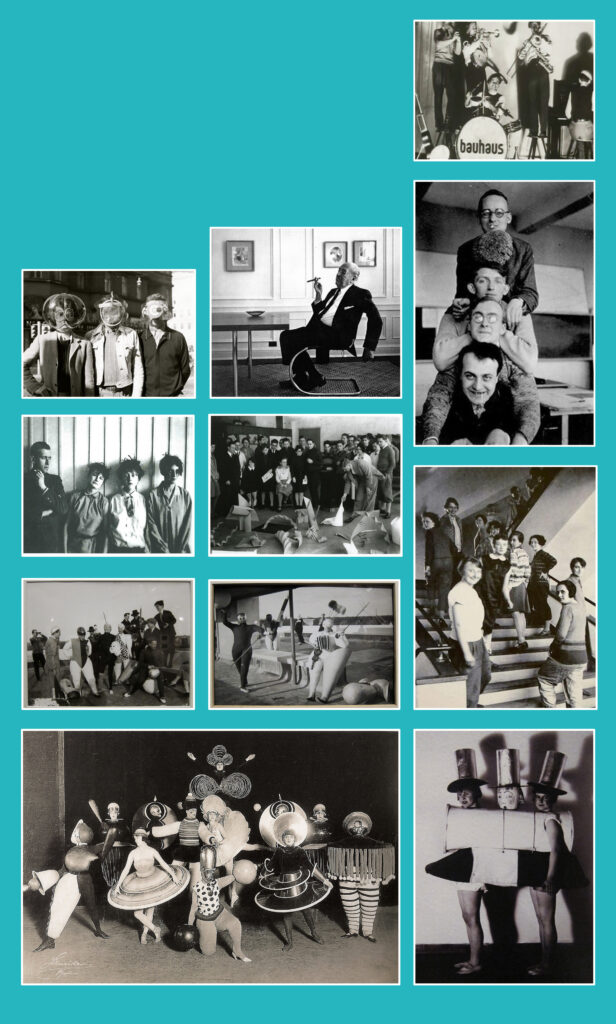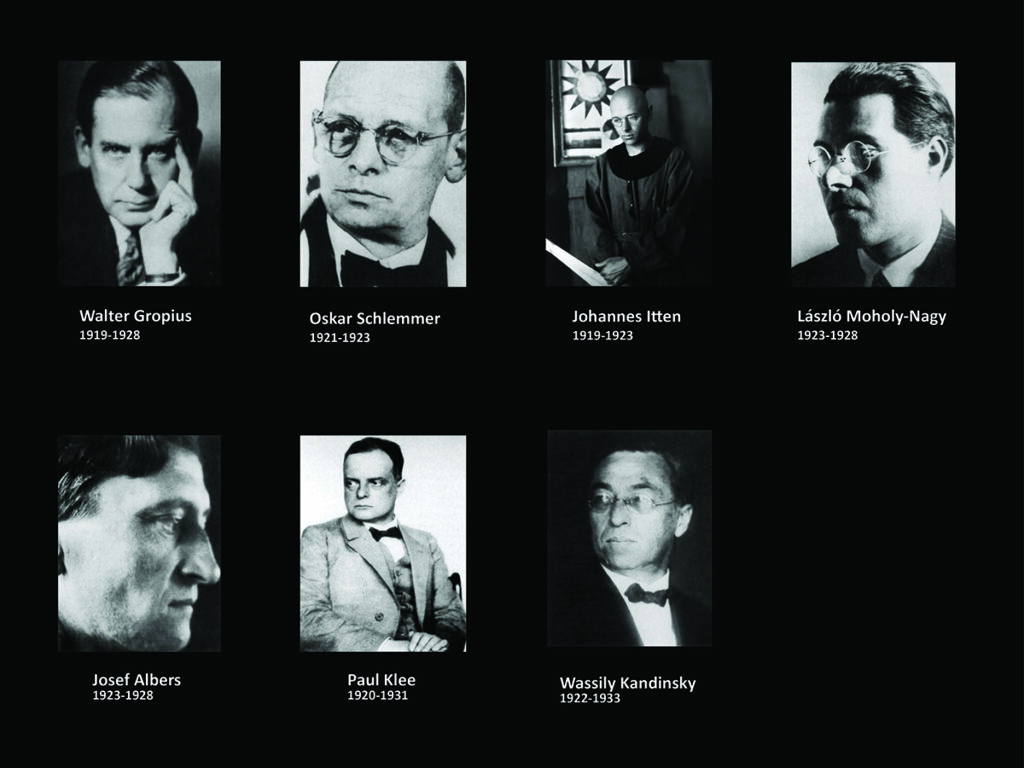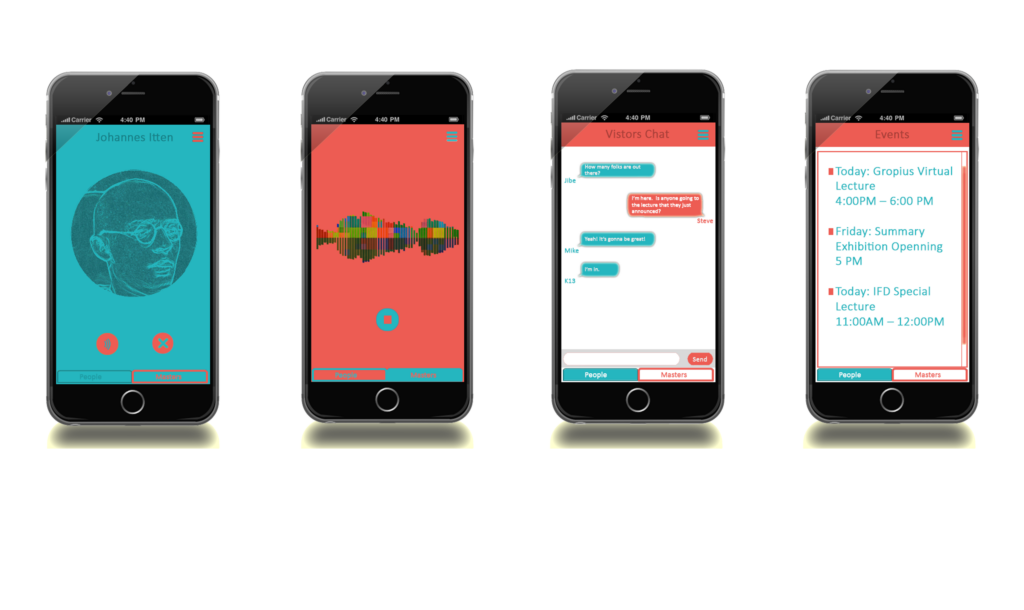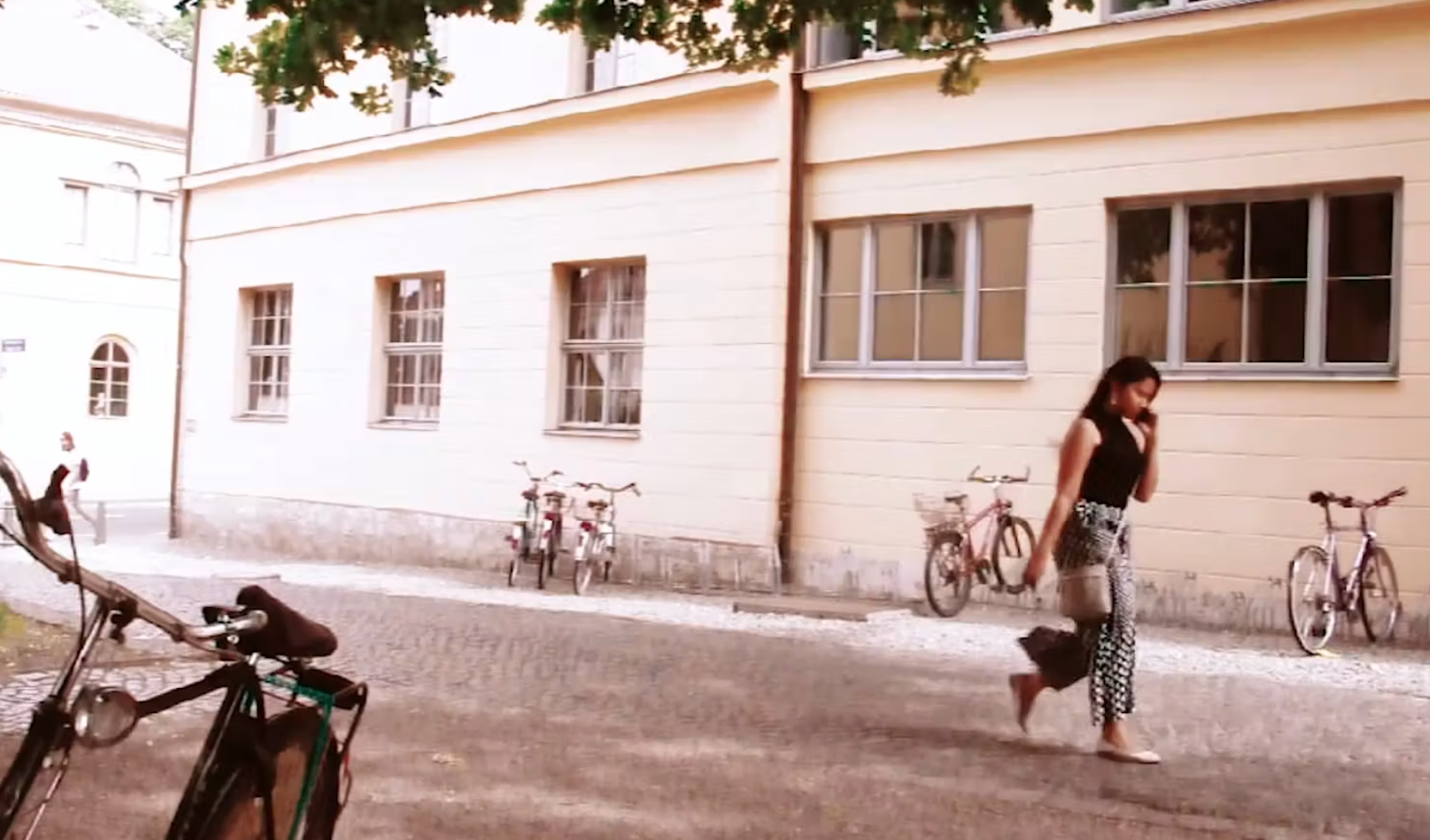Advisor: Michael Markert, Weimar, 2016
The project proposes a concept for a mobile app that offers a digital version of the Bauhaus walk. The mobile phone as a medium offers new ways for an extraordinary experience, one that could reflect the founder, Gropius’ futuristic plan of truly combining art and technology.
Original Bauhaus school of art and design had a short life from 1919 to 1933, regardless it would become one of the world’s most influential art and design schools. Its social, political and economic situation left even more for art researchers and historians to work on.
Today, the Bauhaus Walking tour is known as an integral part of Weimar’s rich cultural experience for visitors of the city. With current students as the tour guides, visitors are able to see the past and the present of the school from an insider’s view of Bauhaus world.

Influential artists gathered together to invent a new art pedagogy. But Bauhaus was not only a school, it was a method of life. It was a world for teachers and students to think, work, make, eat, sleep, party, play, and sometimes dive in ritual exercises together. The invited radical artists or ‘form masters’, together with the ‘work masters’ or trained craftsmen in Weimar, redefined the structure of [art] school in a way that is still being taught all over the world.

Thus, the focus of this concept is not only on historical art and architecture of Bauhaus but also on the character of masters themselves, in an intimate way. Some of them have been selected to directly participate in this experience.
Conversations change the destination, paths, as well as amount and kind of information that users will receive. Questions also determine how long the user wants to extend or limit his/her experience. The tour is predicted to be flexible between 20 minutes and an hour.
Johannes Itten, the extraordinary master of Bauhaus, is the main character of this story. Amongst all of the masters, Itten had the most unique character. His spiritual training was a crucial part of his presence in school. Along with his strict beliefs, Itten finally raised a conflict against Gropius which prevented him from teaching at Bauhaus.
Through this app, Itten is brought to present day. In this fictional story, when Itten decides to leave Bauhaus, he time travels into the future to let people understand the true story of Bauhaus. His accurate timing introduces the historical Bauhaus exhibition of 1923 to the people of 2019. Itten refracts the time frame and mixes past, present and the future.

Masters’ communication with users happens through in-app voice calls. The app uses voice recognition technology to understand the users’ voice. Therefore, the users will have minimal interaction with their screens. The visual interface of the app is meant to be simple. Other than two pages for talking with masters, “Visitor Chat” and “Events” add an extra taste to the app.
The app works in two modes of communication: with masters or with the other visitors, which are reachable through a segment button at the bottom of the application. Visitors are able to chat with each other in a global page while they are visiting Bauhaus. Events are constantly being updated by app administrators.
